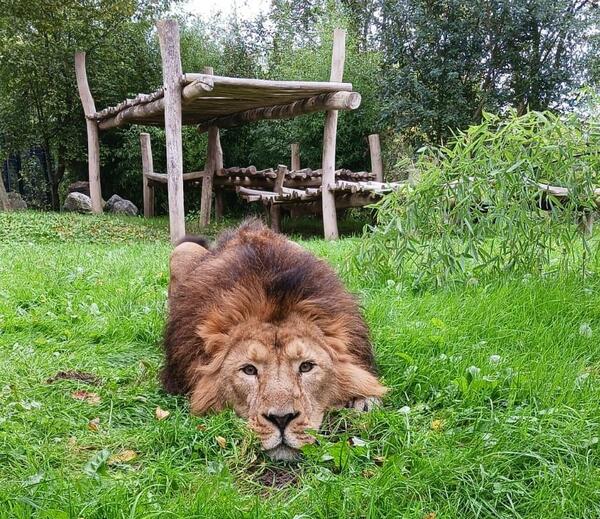Raman has arrived at the ZOO
Ljubljana ZOO welcomed a new resident at the end of April this year – the Asiatic lion Raman, a representative of one of the most endangered lion subspecies in the world. His arrival marks a new chapter in Ljubljana ZOO's efforts to preserve biodiversity and an invaluable opportunity for visitors to get up close and personal with the Indian king of animals, which has almost disappeared in the wild.
This majestic animal comes to us as part of the international species conservation program of the European Association of Zoos and Aquaria – EAZA and will be an important ambassador for raising awareness about the extinction of large carnivores.
Raman – lovely or sacred
Male Raman was born on 25 January 2016 at the Belgian Planckendael ZOO. His name fills us with optimism, because in Hindi and Sanskrit »Raman« often means »pleasant« or »lovely« and »sacred« or »celebrated«, it is also a name associated with the god Rama, one of the important deities in Hinduism. At the age of two, Raman was moved to Maubeuge ZOO in France, where he recently lost an older female, similar to the 16-year-old lioness Živana at the Ljubljana ZOO.
Raman will now need some time to get used to his new environment and company, so in the coming days, he will first be on display to visitors in the indoor viewing area, and towards the end of the month already in the outdoor one.
Highly endangered Asiatic lions
Asiatic lions (Panthera leo persica) are one of the most endangered subspecies of lions in the world. Once they inhabited vast areas from south-eastern Europe and the Middle East to eastern India, today only about 600 to 700 lions live in the wild in a single isolated population in western India. This reduced area is now their only natural habitat, which makes the subspecies extremely vulnerable, due to their lack of genetic diversity, to threats such as disease, natural disasters and potential conflicts with humans. Efforts to conserve them have so far been successful – Indian authorities are implementing strict protection of the area, programs to prevent conflicts between lions and local people, and are looking for additional suitable locations for their resettlement. The Asiatic lion is a symbol of a successful, but still very »fragile« conservation effort. Despite all conservation efforts, the species also faces challenges brought about by the small gene pool of this subspecies. Asiatic lions, both in the wild and in zoos, descend from a very small number of ancestors, which increases the risk of inbreeding and occasionally leads to health problems associated with low genetic diversity.
The role of zoos in the conservation of Asiatic lions
In 1994, the European Ex-situ Programme (EEP) for endangered species was launched within the European Association of Zoos and Aquaria (EAZA), and later the studbook. By 2005, there were 80 Asiatic lions in the European breeding programme, and today there are over 100. They are the only Asiatic lions living outside India and they represent an important reserve population in case the last highly endangered wild population in India is lost. Some major zoos, in collaboration with partners in India, are building permanent infrastructure to protect Asiatic lions, paying dedicated and trained rangers, and supporting a system of animal monitoring to obtain scientific data on what is happening in the protected area, which would help in timely identification of threats to the wild population of Asiatic lions. Educating local communities about the importance of lion conservation is also key.
Asiatic lions in zoos, including the Ljubljana ZOO, which has been breeding them since 2019, are therefore an important part of the breeding program aimed at strengthening and saving the highly endangered wild population in the Gir Forest, which once spread densely all the way to North Africa.


